



Explained: Who are the Kurds, and why is Turkey attacking them in Syria
Kurdish forces who had until recently been America’s allies against both the Islamic State and President Bashar al-Assad of Syria, announced an agreement with the Damascus regime, which is backed by Moscow and Tehran, the United States’ two great rivals in the region.
- USA abruptly pulled US forces out of Syria.
- Turkey’s President RecepTayyip Erdogan crossed the border into Syria.
- He took over Kurdish-held territory.
- The Kurds are the world’s largest stateless ethnic group.
- There are an estimated 25 million to 35 million of them.
- They live in the highlands of southern and eastern Turkey, northern Iraq, the northeastern Syria, northwestern Iran, and parts of south Armenia, and are a minority in each of these countries.
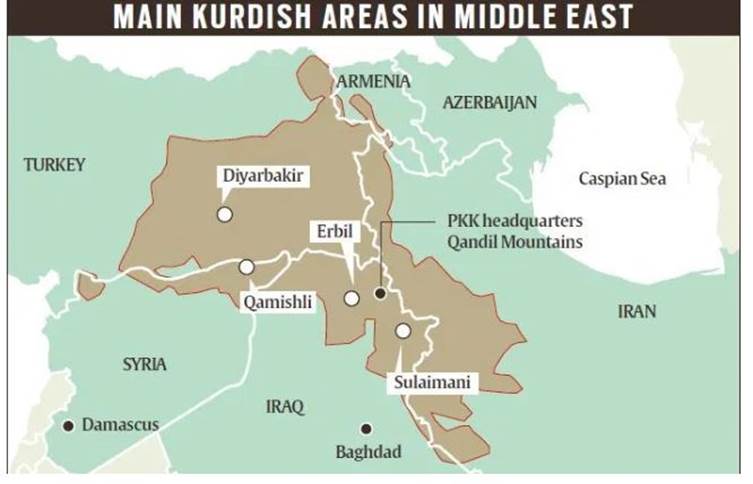
- The majority among the Kurdish people today are Sunni Muslim, but there are adherents of other faiths too, including Sufism and other mystical practices.
- They speak a language that is related to Persian and Pashto, although local dialects differ.
- Kurds have long had a reputation for being fearless fighters, and they have served as mercenaries in many armies over the centuries.
- The Kurdish people never had their independent national homeland.
- At the Versailles peace conference after World War I, the Kurdish Ottoman diplomat Mehmet Sherif Pasha proposed borders of a new Kurdistan that covered parts of modern Turkey, Iraq, and Iran.
- The Treaty of Sèvres (1920), which partitioned the old Ottoman dominions, marked out a much smaller territory, entirely in what is now Turkey.
- Turkey negotiated with the Allied powers and, in 1923; the Treaty of Lausanne overtook Sèvres and ended the idea of a self-governing Kurdistan.
- Kurdish attempt to create an independent Kurdistan attracted massive Turkish repression, including bans on the Kurdish language, names, songs, and dress.
- Kurdistan Workers’ Party (Partiya Karkerên Kurdistanê or PKK in Kurdish) guerrillas fought the Turkish army from 1984 until Öcalan’s capture in 1999, during which some 40,000 Kurdish civilians were killed.
- As the Islamic State swept across Syria and Iraq, the only fighters who were able to resist the onslaught were the Syrian Kurdish militias, the most powerful of which was the People’s Protection Units, known by its Kurdish initials, YPG.
- In 2014, as the US joined the war against Da’esh, it found in the YPG a helpful regional ally.
- From the US perspective, the Kurds also served as a military counterpoint against the Iranians and Russians, and provided some advantage in a future deal to end the war.
- Once the Kurds, backed by the Americans, had forced Daesh out of northern Syria, they took over the re-captured land along the Syria-Turkey border, home mainly to ethnic Kurds, Arabs, and some other groups.
- The YPG has close links with the PKK, and for Erdogan’s regime, this seemed like a serious security threat.
- For the US, the problem was of balancing decades-old hostilities and suspicion between its two allies — Turkey was part of NATO and an ally against Assad.
- On the nudging of the Obama administration, the Syrian Kurdish militia sought to cover its links with the Turkish guerrillas, changed its name to Syrian Democratic Forces (SDF), and started to enlist larger numbers of non-Kurdish fighters.
- The US also worked to keep the peace on the Turkish border, carrying out patrols both on its own, and jointly with the Turkish army.
- Trump decision to withdraw army led to Turkey attack on Kurds.
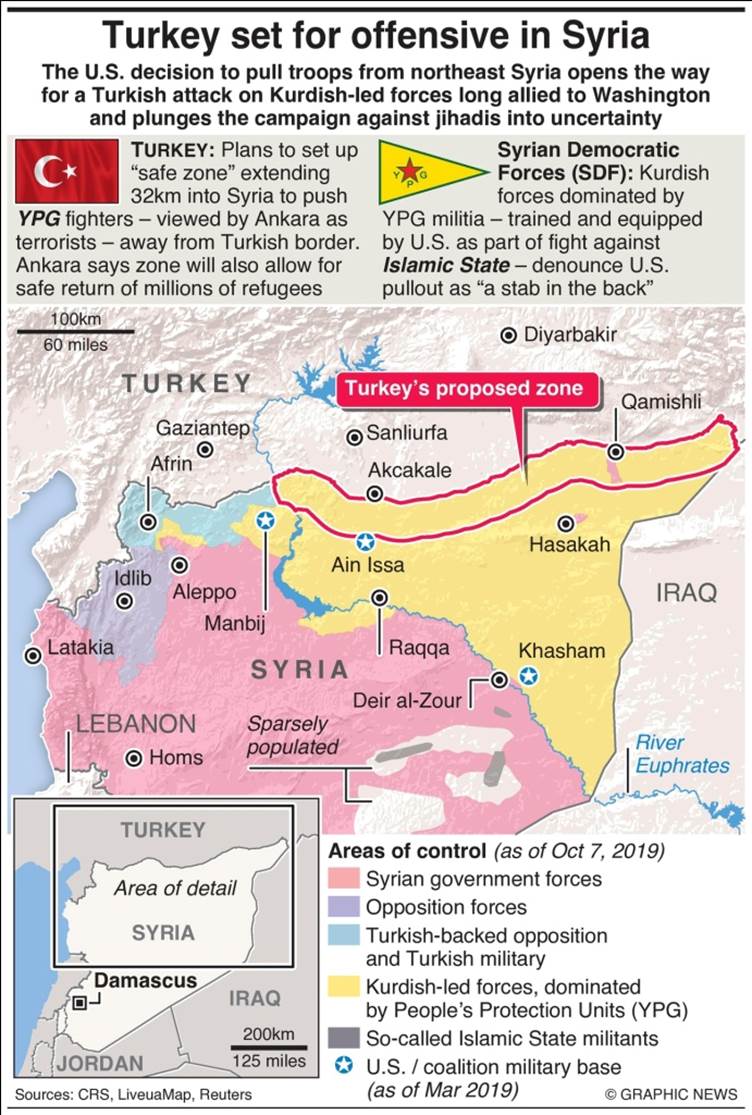
Reference: https://indianexpress.com/article/explained/turkey-attacking-northern-syria-kurds-6071019/
At the London Zoo, a fern has started taking its own selfies, the Zoological Society of London (ZSL) announced.
- Microbial fuel cells are devices that use bacteria as the catalysts to oxidise organic and inorganic matter and generate current.
- Plants naturally deposit bio matter as they grow, which in turn feeds the natural bacteria present in the soil, creating energy that can be harnessed by fuel cells and used to power a wide range of vital conservation tools remotely, including sensors, monitoring platforms and camera traps.
- Plants can survive in the shade, naturally moving into position to maximise the potential of absorbing sunlight.
- As the current trend is concerned, for the first six months, (in) direct tax, we have seen growth of around 10 per cent, and in the corporate tax, we are at lower, but the overall growth is at 5 per cent.
- In case of GST for the first six months, the overall growth is 5 per cent.
- It has been a trend in the direct taxes that the revenue collection picks up in the later half of the year
- On the expenditure for the welfare programmes, the capital expenditures, the government will be committed to make those expenditures.
- Disinvestment will also be source of income.
- As we go along, depending upon the revenue position of the states and Centre, the items could be moved from one slab to another, or maybe some slab could be eliminated.
- More needs to be done to make the system more simplified and easier to operate.
- Fix the abuse of the system.
- How frequently you should go and change the rates, some stability to settle down is also very important.
- Industry must be sure that this is the kind of a tax rate, which should be there, and should prevail over a certain time, so that they can plan their business accordingly.
- The revenue requirement of the states as well as Centre needs to be considered.
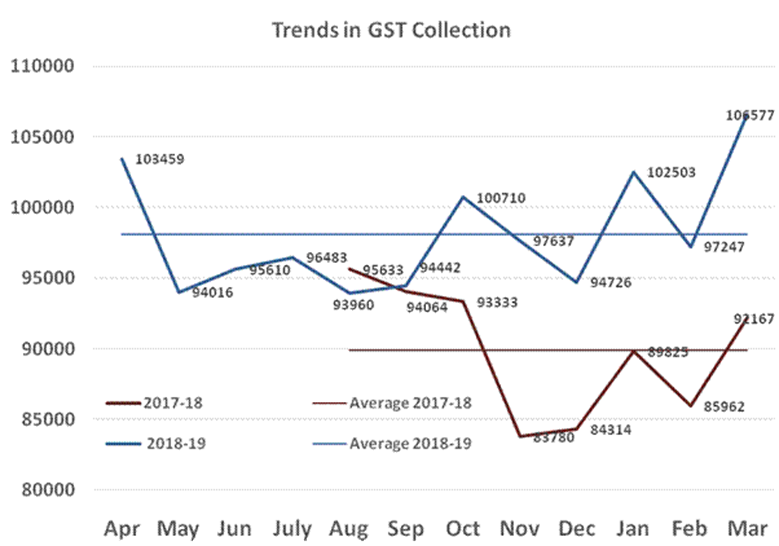
The Kerala Police arrested a builder and two former officials of the local self-government department in connection with the criminal case pertaining to the construction of four apartment complexes in violation of Coastal Regulation Zone (CRZ) norms at Maradu near Kochi.
- Builders conspired with panchayat officials to obtain building permits in the 2005-06 periods, which were issued without mandatory clearance from the Kerala Coastal Zone Management Authority.
- With the objective of conservation and protection of the coastal environment, Ministry of Environment, Forest, and Climate Change notified the Coastal Regulation Zone Notification in 1991.
- It was subsequently revised in 2011.
- Currently, Coastal regulations of 2018 are in place, which is based on Shailesh Nayak Committee.
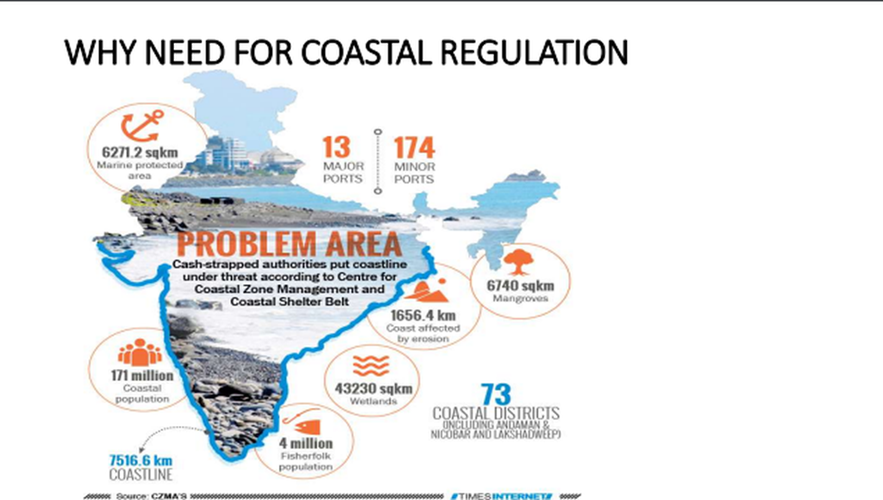
- Allowing FSI as per current norms in CRZ areas
- Densely populated rural areas to be afforded greater opportunity for development
- For CRZ-III (Rural) areas, two separate categories have now been stipulated as below:
- CRZ-III A: Such areas shall have a No Development Zone (NDZ) of 50 meters from the HTL as against 200 meters from the High Tide Line stipulated in the CRZ Notification, 2011.
- CRZ-III B: Rural areas with population density of below 2161 per square kilometre as per 2011 Census. Such areas shall continue to have an NDZ of 200 meters from the HTL.
- Tourism infrastructure for basic amenities to be promoted: Temporary tourism facilities such as shacks, toilet blocks, change rooms, drinking water facilities etc. have now been permitted in Beaches.
- CRZ Clearances streamlined only such projects/activities, which are located in the CRZ-I (Ecologically Sensitive Areas) and CRZ IV (area covered between Low Tide Line and 12 Nautical Miles seaward), shall be dealt with for CRZ clearance by the Ministry of Environment, Forest and Climate Change.
- A No Development Zone (NDZ) of 20 meters has been stipulated for all Islands.
- All Ecologically Sensitive Areas have been accorded special importance.
- Pollution abatement has been accorded special focus.
- Defence and strategic projects have been accorded necessary dispensation.
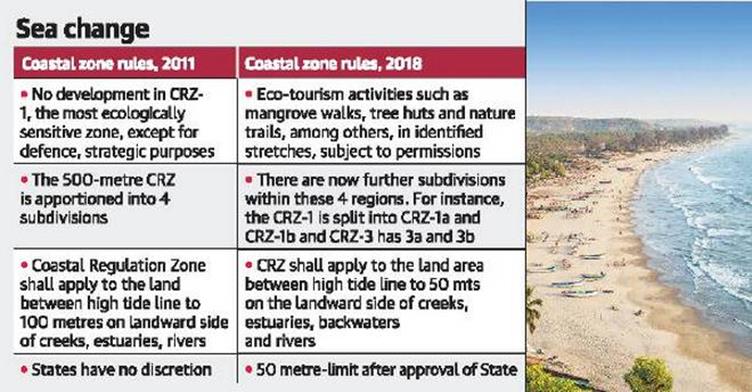
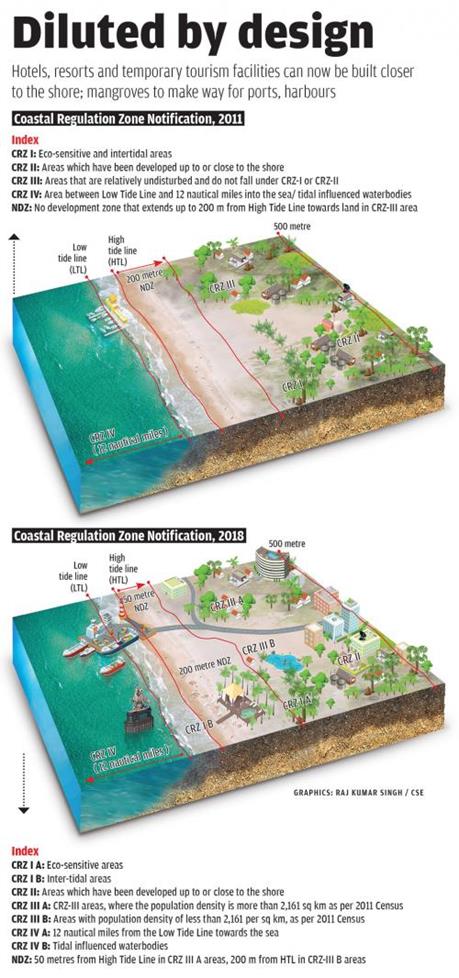

© 2025 iasgyan. All right reserved